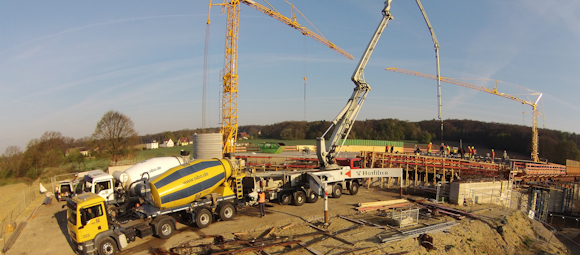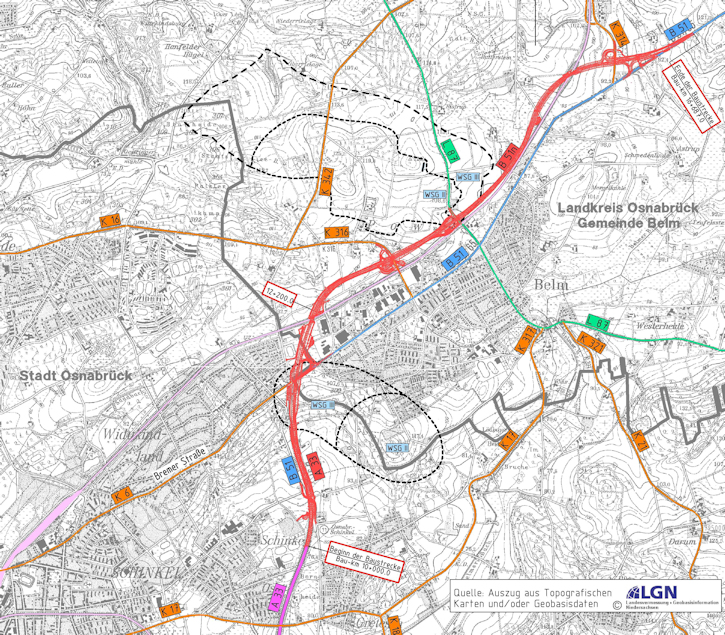
Bypass Will Relieve Traffic Through the Town Belm as of 2019
A bypass road is intended to relieve the traffic load on the passage through Belm (district of Osnabrück). sibo supplied the concrete for the construction of nine of the ten bridge structures required.
The federal highway 51 has an important function in business and commuter traffic, but also in recreational and leisure traffic. Due to the high traffic load - on average more than 20,000 vehicles drive here every day, about 10 % of which are heavy goods vehicles - the life of the residents in Belm is considerably impaired by noise and pollutant emissions and by mechanical shocks. A further increase is forecast for the coming years.
With the land-use planning approval decision of August 30, 2010 and the expiry of the objection period on November 5, 2010, it became official: The municipality of Belm is to be given a bypass. The 6.7 km long bypass to the west of Belm was planned as an extension of the highway 33 (2.2 km) and the adjacent new federal highway 51. It will have two lanes in both directions. Noise barriers will also be built over a total length of 1.3 km.

Route of the bypass (Source: Nieders. State Authority for Road Construction and Transport)
The client of the project, which cost around 67 million euros, is the Lower Saxony State Authority for Road Construction and Transport, regional area Osnabrück. The preparatory construction work began at the beginning of 2013; the official ground-breaking ceremony took place on 17 June 2013. However, before the construction work on the individual sections could get underway, the respective construction site had to be prepared - sometimes even at great expense. For example, the civil engineering company Bunte had to dig a path into the hard rock of the Schinkel slope with a special excavator. Blasting was also necessary and a small forest had to be cleared.
For nine of the ten bridge structures erected, sibobeton Osnabrück supplied high-quality ready-mixed concrete of strength classes C30/37, C45/55 and C45/55 mainly from its Osnabrück and Georgsmarienhütte sites. The Melle and Schwagsdorf sites acted as substitute suppliers. In total, around 25,000 cubic metres of sibo concrete were used, including further deliveries for smaller adjacent works and the bored piles of the tenth bridge, most of which were erected in 2017.
Cements of grades CEM III/A 42.5 N and CEM I 42.5 N from Dyckerhoff's Lengerich plant were mainly used for the bridge caps. The company Hofschröer from Lingen (Ems) was awarded the contract for the construction of six bridges. The construction companies Ed. Züblin, Eurovia (Vinci) and Josef Korte from Rheine were each awarded a bridge contract. In order not to obstruct daytime traffic even more, the superstructures were usually erected at night. A logistical challenge: sibobeton delivered around 1,000 cubic metres of concrete each, which is more than 140 mixing trucks per night.
The bridge structures themselves have now been completed, but work is still in progress on the carriageway for the new bypass. The remaining part of the Schinkelberg is also being removed. The bypass is due to be opened to traffic at the end of 2019.

